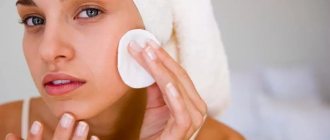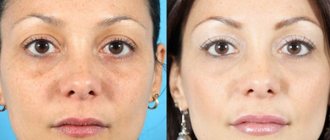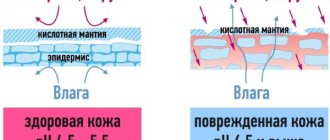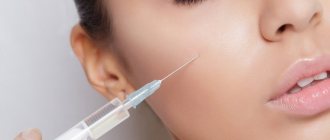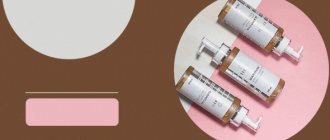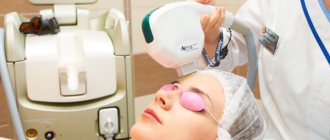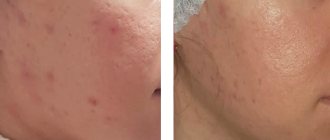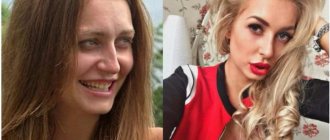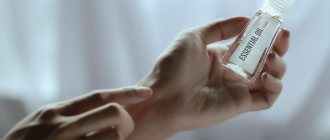Facial massage is the most current anti-aging trend. Many world and Russian stars choose it instead of plastic surgery.
Everyone has already seen enough of the victims of “punitive” cosmetology with artificial and quickly aged faces to come to the only healthy decision. You can “sculpt” a young and beautiful face only naturally, with the help of your own hands.
Read about the anti-aging effects of massage and the best techniques in this article.
What is a classic facial massage
Massage is a method of influencing body tissues using mechanical movements, which are usually carried out using the hands.
In the case of facial massage, its main purpose is cosmetic: to slow down and even reverse the aging process.
The classic version of massage involves a smooth effect that mainly affects the skin level. But there are also powerful techniques that work more deeply and have a pronounced sculpting effect.
Is your face covered with wrinkles, folds and creases?
Has your skin become loose and gray?
Has the oval of the face “swollen”, have “bulldog cheeks” and a double chin appeared?
Facial massage is the only healthy and safe way to eliminate age-related changes.
You may ask, what about injections, threads, plastic surgery, operations - all this “rejuvenation” set from cosmetologists and plastic surgeons? They do not prevent aging at all. It's the other way around. Syringes and scalpels only worsen age-related changes. The structure and functionality of tissues suffer from foreign, toxic substances and injuries, and the skin’s ability to naturally regenerate is killed.
Only massage. It launches natural rejuvenation mechanisms and brings out our beauty from the inside. Blood, lymph, muscles, fascia, skin - everything on which our appearance depends begins to work as in youth. The phenomenon of massage is that it eliminates the causes of age-related changes in the face (and does not create an appearance) - nothing else is simply capable of this.
This is the only effective and safe way of rejuvenation; there are simply no others.
Starting from the age of 30, when aging mechanisms begin in a woman’s body, facial massage should become as much a part of daily self-care as showering and combing hair.
It would be optimal to start at the age of 20-25 in order to delay and minimize the manifestation of age-related changes as much as possible. But is it business as usual for a woman? As long as you like the reflection in the mirror, you don’t need to do anything. So at least at 30.
Where and how to do facial massage?
You can, of course, go to a cosmetologist for the procedure, but it’s expensive, inconvenient, and you don’t have time. You are not there every day. And most importantly: massage techniques are easy to learn on your own and use daily at any convenient time.
Having mastered self-massage, in just half a month you will notice changes in the mirror, and in a month you will receive admiring “how younger you look!” from others.
The only catch may lie in what set of techniques you choose for yourself. Not all of them are useful or effective. For example, some exercises (face building) are aimed at pumping facial muscles and increasing their hypertonicity - this will only worsen the aging process.
Proper techniques should relax the muscles and restore nutrition to the skin through the blood.
Let's tell you why.
MECHANISM OF ACTION HYALRIPAYER®–04 BIOREPARANT
HYALRIPIER®–04 Bioreparant contains hyaluronic acid at a concentration of 14 mg/ml, modified with vitamin C, L-cysteine and L-glutathione.
To produce the drug, hyaluronic acid of a pharmacopoeial class of high purity with an optimal molecular length (2 million kDa) is used, which ensures the restoration of the intercellular space, targeted delivery of biologically active substances directly to cells through the receptor mechanism of interaction with fibroblasts, and the creation of a depot of low-molecular components. Thanks to the solid-phase modification of hyaluronic acid with biologically active substances, its viscosity is optimized, which ensures rapid and uniform distribution of the drug in the intercellular space. Hyaluronic acid is an independent highly effective active ingredient. It acts as a filler of the intercellular space during its structuring in interaction with proteins, plays an important role in the hydrodynamics of cells and tissues, ion exchange, transport of substances from the blood capillaries into the cell and from the cell into the lymphatic capillaries, acts as a structural mediator in the interaction of cells, creates channels for their migration.
The patented HYALREPAIR® technology ensures prolonged biodegradation of both hyaluronic acid and the components “sewn” to it.
After the introduction of HYALRIPAYER®–04 Bioreparant into the dermis, a depot of biologically active substances is formed, which remains in the tissues for a long time (up to three weeks). During this time, a gradual release of biologically active components occurs, which ensures their constant presence in tissues in physiological concentrations. Precisely physiological
concentrations of substances ensure their maximum bioavailability, which creates optimal conditions for maintaining vital activity and rapid restoration of cells after damage.
HYALREPAIR® technology is the only technology (patent No. 2382050) that launches its own processes of skin restoration and rejuvenation (Bioreparation). It is based on a unique method of modifying hyaluronic acid with biologically active substances under the influence of high pressure and shear deformation without the use of chemical cross-linking reagents. HYALREPAIR® preparations are registered in the Russian Federation as medical products.
Ascorbic acid
(vitamin C), released during the biodegradation of hyaluronic acid in the preparation, has a significant effect on the condition of connective tissue. The presence of ascorbic acid is necessary for the hydroxylation of proline and lysine residues in protocollagen to hydroxyproline and hydroxylysine residues. Proline hydroxylation is necessary to stabilize the collagen triple helix, and lysine hydroxylation is necessary for the subsequent formation of covalent bonds between collagen molecules during the formation of collagen fibrils. This process is considered decisive for stabilizing the intercellular substance of connective tissue and reducing capillary permeability.
In addition, ascorbic acid blocks melanin synthesis, inhibiting the action of tyrosinase. Vitamin C is an antioxidant. It inhibits the radical chain oxidation process, restores alpha-tocopherol (vitamin E) and folic acid (vitamin B9) from the oxidized form, thereby transforming them into a bioactive state. Ascorbic acid can influence the formation of glycosaminoglycans, stimulate the proliferation of fibroblasts and reduce the production of metalloproteinases.
Cysteine and tripeptide glutathione
- powerful antioxidants that act at various stages of the free radical chain process of oxidation of biomolecules. Cysteine is involved in the synthesis of taurine, a substance that effectively inhibits lipid peroxidation. In the body, cysteine and glutathione restore the oxidized form of vitamin C to its original active form. Cysteine is a source of organic sulfur for body cells, is part of proteins and peptides, and plays an important role in the formation of skin tissue. Glutathione helps reduce the severity of pigmentation by inactivating the enzyme tyrosinase; has detoxification, antiglycosylation, anti-inflammatory functions. Glutathione is also a regulator of the cell cycle, differentiation and apoptosis. The complex introduction of glutathione, cysteine and ascorbic acid into the skin leads to a synergy effect and has a very effective antioxidant effect, which manifests itself at different stages of the free radical chain process of oxidation of biomolecules.
Thus, HYALRIPAYER®–04 Bioreparant is designed to correct aesthetic imperfections of the skin due to photoaging and age-related changes, protect the skin from damage by aggressive environmental factors, and treat hypermelanosis. The drug is recommended for patients with a tired aging morphotype. Due to the fact that the active substances included in the drug are retained in the skin for three weeks, the frequency of administration is once every three weeks. The drug has a gel form and is available in a 1.5 ml glass syringe.
What does facial massage give: the benefits and effect of the procedure
The uniqueness of self-massage is that with its help you can establish physiological processes, the failure of which led to facial aging.
What exactly happened?
- Blood began to flow more slowly and delivered nutrients to the skin cells worse, and local metabolism slowed down.
- Structural changes have occurred in the skin: less collagen, elastin, and lipids are produced; existing collagen fibers are damaged; due to the reduction in the ability of hyaluronic acid molecules to retain moisture, the dermis has become less nourished, etc. All the main characteristics of youthful skin have fallen: firmness, elasticity, strength, smoothness, turgor.
- Let's look deeper: muscles. What happened to them? On the face and neck they spasmed from overexertion, that is, they literally became shorter, lost elasticity, and became unable to stretch to their natural length. What have these constrained muscles done to the skin, which is already withering on its own? They pulled her along like an accordion. The integument has gathered in folds (wrinkles) and sagged (bulldog cheeks, fuzzy oval, drooping eyelids).
- The lymph also began to circulate worse; it stagnated on the face like a dirty swamp of toxins, the end products of metabolism. This means swelling, puffiness, looseness of the skin, bags under the eyes, increased wrinkles, and “slipping” of tissues downwards.
Now we are thinking about what to do for rejuvenation. Logic suggests the main task is to reverse the processes. That is, we must:
- help blood flow speed up, improve cell nutrition,
- restore lymph flow, relieve congestion and swelling,
- relax spasmodic muscles, lengthen them to their natural size, make them elastic again,
- strengthen the skin by activating the synthesis of collagen, elastin fibers, hyaluronic acid; make it firm, elastic, strong and moisturized.
All this can be achieved only through self-massage. There are also auxiliary methods (cosmetics, nutrition, drinking, general physical activity, etc.). But self-massage is the basis.
The result of a competent anti-aging massage:
- wrinkles, folds, creases, nasolabial folds are smoothed out,
- elastic skin,
- eliminated swelling, bags under the eyes, “bulldog cheeks”,
- a toned oval, a clear “youth angle” without a double chin,
- open gaze,
- raised corners of the lips,
- graceful nose,
- healthy complexion.
Facial massage lines
For more than a century and a half, humanity has known in what directions to massage the face so that the skin does not stretch and sag.
Such vectors are called massage lines, or otherwise Langer's lines (they were discovered by the German anatomist Karl Langer). It is generally accepted that in these areas the skin resists stretching three times more than in others. If you massage along massage lines, the integument will retain its shape.
Try stroking your face with both hands right now. Most likely, you will move from the center to the periphery. This is the basic principle of the arrangement of massage lines.
Remember in which directions to massage your face correctly:
- forehead: from the middle of the forehead to the temples,
- eyes: along the upper eyelid from the inner corner to the outer, and along the lower - in the opposite direction,
- cheekbones: from the wings of the nose to the temples,
- nose: from tip to bridge of nose,
- cheeks: from the corners of the mouth to the ears,
- lower jaw: from the middle of the chin to the earlobes,
- neck: on the sides - from top to bottom, in front - from bottom to top (from the collarbones to the chin).
Neck: procedure
The classic scheme of action involves the neck. Many people forget an important element. A neglected neck can instantly reveal age and make the number more impressive. It is imperative to take care of the skin of the problem area.
The procedures begin by treating the décolleté area, paying attention to the neck. Smoothly moving higher. The lines of minimal stretching of the skin of the neck area are not uniformly located. In front, movements are made, moving from the chest to the border of the chin. The side surface and back are worked from top to bottom.
Types of facial massage
Facial massage can be different - it all depends on the goals and techniques used.
What do you want: improve skin tone and improve complexion or remove serious age-related changes (smooth out wrinkles, tighten oval shape)? Or maybe you are hoping to cure some skin disease with the help of massage?
We talk about the main types of manual massage.
Classical
In its classic version, facial massage is done with your hands and affects primarily the skin (the muscles are worked superficially).
In the dermis and hypodermis, blood flow and lymph outflow improves, collagen synthesis and cell renewal are accelerated. Due to this, the skin becomes more elastic and taut, its color improves, and wrinkles are slightly reduced.
But classic massage will not provide a serious lifting effect, since there is no deep impact on the muscles and fascia, that is, all the main causes of age-related changes are not worked out.
Technical features of classic facial massage:
- done on a pre-moistened face (with massage oil or cream),
- movements are smooth and sliding, with fingertips,
- The main techniques are stroking and rubbing; kneading and vibration are also used.
Myofascial
Myofascial massage works at a deep level. Its goal, as the name suggests, is to work out the fascia that covers the muscles (myo-).
In general, fascia is the connective tissue membrane of bones, muscles, tendons, and organs. In this case, we are talking about the fascia on the face and neck, which acts as a sheath for muscles, ligaments, tendons, and houses blood vessels and nerves.
Have you heard anything about fascia? It wouldn't be surprising if not. Even science for a long time did not pay due attention to them and treated them as “packaging”. But fascia influences the transmission of force from muscle to muscle, maintains the shape of tissues, and the functioning of muscles and skin depends on its condition.
In its healthy, young form, fascia usually resembles an accordion; its “furs” easily stretch and return back. But with age (and also under the influence of excessive loads or, conversely, physical inactivity), fascia loses flexibility and elasticity, its fibers become tangled, stick together, and acquire a disordered geometry.
To increase the functional activity of aging skin, it is also necessary to work on the muscles and fascia.
In myofascial massage, the movements are strong. Techniques of pinching, twisting, kneading, rubbing, and smoothing are used. As a rule, the procedure is done on dry skin. In addition to the face, the tendon helmet is actively worked out - this relieves tension in the scalp and in the facial muscles, which it pulls along with it.
Result:
- getting rid of muscle tension, spasms, pain, removing blocks,
- returning muscles to mobility, correct shape and length,
- improvement of skin condition: collagen is more actively produced and cell renewal is accelerated,
- normalization of blood circulation and oxygen saturation of tissues,
- acceleration of lymphatic drainage and removal of toxins.
We have adjusted the internal mechanisms - we immediately see the result on our face. Wrinkles went away, the skin tightened, the oval became clear, the color improved.
Myofascial techniques, along with other most effective methods of natural rejuvenation, were taken into account by MelAnnett when developing her signature beauty marathons.
Plastic
From the name of plastic massage it is clear that its task is plastic surgery, facial modeling. It is offered in salons as an alternative to contouring (filler injections). A pronounced lifting effect is promised.
In fact, this is also a technique for deep facial treatment - the skin, subcutaneous fat, and muscles are involved. All movements are made with strength and pressure.
Lymphatic drainage
As the name of lymphatic drainage massage suggests, its goal is to restore lymphatic drainage, that is, the movement of lymph along its entire path in the body.
Where does lymph start? From their capillaries, which “suck” tissue fluid from the intercellular space. These tiny vessels of the lymphatic system penetrate almost all tissues on the face and have access to every cell of the skin (except the epidermis). Washing the cell, the tissue fluid takes away all the toxins and metabolic products from it, then with all this “dirt” it enters the lymphatic capillary. From this moment on, it is already lymph, which must pass along all its “transport routes”, be cleansed in the lymph nodes and, as a result, enter the bloodstream in its pure form.
But with age and due to an incorrect, sedentary lifestyle, natural lymphatic drainage is disrupted. Lymph stagnates on the face in a “rotting swamp”, swelling occurs, and toxins poison the tissues.
Many of our age-related changes on the face are the result of impaired lymphatic drainage. Puffiness, bags under the eyes, ptosis (drooping) of the upper eyelid, jowls, double chin, heavy lower jaw, blurred oval, nasolabial lips, wrinkles, a swollen nose of a rough shape - our lymph took part in the formation of all this.
To get rid of problems, you need to regularly do lymphatic drainage facial massage. How?
- We knead the face along the lines of lymphatic drainage (middle of the forehead - temples; bridge of the nose; outer edges of the eyebrows; chin - corners of the lips - wings of the nose - cheekbones; chin - lower jaw - ears).
- We massage the paths along which lymph flows from the face. We work on places where lymph nodes accumulate so that their blockage does not block the path of fluid (the area near the ears, under the jaw, armpits, collarbone).
The best lymphatic drainage techniques can be found in the basic marathon “SmeloNET” from MelAnnett.
Medicinal
Also, with the help of massage, it is proposed to treat various skin diseases, including acne, seborrhea, hyperkeratosis, scars, and increased fat content. The main technique is deep pinching: the skin is grabbed into a large fold, and movements are made along massage lines, from the center to the periphery. In addition, vibration, stroking, and kneading techniques are used.
But “treating” skin diseases with massage should be done with caution. For many skin pathologies, massage is contraindicated.
You can read more about contraindications below.
The significance of Langer's lines in forensic medicine
Langer lines and skin strength
The strength properties of the skin depend on the direction of the acting force relative to the orientation of the collagen fibers (Langer's lines). The skin provides maximum resistance when the direction of impact coincides with the orientation of these fibers; the specific tensile strength of the skin along the Langer lines requires a load almost 3 times greater than in the transverse direction.
The magnitude of the maximum load leading to skin rupture
Changing the shape of damage
The shape of wounds on the skin, after removing the wounding object, changes its shape. For example, wounds from piercing objects with a ribless surface are not round, but slit-shaped, and their longitudinal dimensions in certain parts of the body are parallel.
There is no dependence of changes in the size of the skin preparation after exposure to fixing solutions relative to the location of Langer's lines.
Skin: functions and structure.
Now we will turn a little to biology, and consider the skin as a living organism. The artist is used to working on canvas, and since a makeup artist is a makeup artist, his main work surface is human skin, which in terms of scale is the largest organ, the area of which in an adult individual sometimes varies from 1.5 m² to 2. 3 m², and makes up approximately 15% of the total body weight. One of its main functions is protective: to protect the body from exposure to the external environment, free radicals, ultraviolet rays, and damage to internal organs. It provides external breathing, participates in thermoregulation, metabolic and excretory processes of the body. Like fabric - it is elastic, porous, durable, waterproof, antibacterial, sensitive. At low temperatures (cold), the lumens of the skin blood vessels are reduced, which means less heat transfer and more heat retention. When the temperature rises, the pores and blood vessels expand, then metabolic processes proceed faster and more intensely, sweating increases and the skin loses a lot of moisture. But do not forget that the intensity of heat transfer will also depend on the humidity of the air (climate), and the thickness of the subcutaneous tissue (including racial characteristics). We have looked at the main functions of the skin, now let's look at its structure. The skin consists of three layers: the outer - epidermis, the middle - the skin itself, or dermis, and the inner - subcutaneous fatty tissue. Each layer performs its own functions. The task of the makeup artist will be to work with the uppermost layer of the skin - the epidermis, since decorative cosmetics are designed for external use and should not affect the lower layers of the skin. Now we will touch in more detail on the structure of the epidermis and working with it, and only superficially then we will touch on the features of the functions and structure of other layers. The epidermis has a thickness of 0.07-2.5 mm. In appearance it resembles a narrow strip, although in fact it consists of 5 layers: horny, shiny, granular, spinous and basal (germ). The last layer contains such an important pigment as melanin. The upper layers of the epidermis become keratinized, forming the keratin (horny) layer, and in its lower basal (germ) layer, on the contrary, cells are constantly formed. Dead cells serve as a protective surface, but they constantly die and slough off, being replaced by new ones. The journey of a new cell from the basal layer to the keratin layer lasts approximately 2-4 weeks. In childhood, cell renewal occurs faster, due to the fact that the body grows; with age, this reproduction speed gradually fades away; visible aging processes begin to appear when the number of dead cells exceeds the number of new ones. Therefore, it is very important to take good care of your skin, cleanse, exfoliate, tone and moisturize it at least 2-3 times a day. In the morning, to put it in order after sleep and metabolic processes, because the body does not stop working when our consciousness turns off. For lunch, for those who have problem skin and well-developed subcutaneous tissue. This requires additional toning and fat removal. In the evening, since during the day it is exposed to external factors (sun, dust, environment), it sweats, removes metabolic products, thereby becoming polluted. Also, before applying decorative cosmetics to the skin, it must be cleaned of cells that have already been exfoliated during the day (with cleansing preparations or tonic), so that cosmetics can then be applied to clean, smooth and even skin. After all, the quality and cleanliness of the work will depend on the condition of the skin. There is even a saying: there is no better makeup than clean and well-groomed skin. Let's return to the epidermis: its deep layers contain pigment cells. They produce the pigment melanin, which affects hair color and skin color in this case, as well as the acquisition of one or another shade of tan. Melanins absorb ultraviolet rays, and thereby protect the tissues of the deep layers of the skin from radiation exposure, deactivate free radicals, and are a catalyst for many biochemical processes. Thus, it is an integral part of the body's immune system. For a makeup artist, the level of melanin determines the level of contrast a person has and their facial tone. The more melanin the skin contains, the darker it is. The largest amount of it is found in the skin of the Negroid race, Indians, Indonesians, etc. Most peoples who live in the equatorial and subequatorial zones, with equatorial and tropical climates, have a high percentage of melanin in their skin; as a result, dark and dark skin serves as protection from intense ultraviolet radiation. Slightly less melanin pigment is found in peoples living in the subtropical zone, with a Mediterranean and subtropical climate: Latin, Eastern, Asian peoples. The average melanin content can be conditionally attributed to people living in a continental climate. And the smallest percentage of pigment will be contained in the skin of people living in the subpolar and polar zones, i.e. among northern peoples, low pigment content also developed historically, due to low-intensity solar radiation, and simply the lack of need for protection from it. And due to the cold and reduction of the lumens of blood vessels, it will appear even lighter, bluer and thinner. The epidermis is practically impermeable to water and solutions based on it. Fat-soluble substances penetrate the epidermis better due to the fact that cell membranes contain a large amount of fat and these substances seem to “dissolve” in the cell membranes. Therefore, many preparations contain emulsifiers that “combine” the water and fat bases. There are also no blood vessels in the epidermis, and its nutrition occurs due to the diffusion of tissue fluid from the underlying layer of the dermis. The next layer of cells is the dermis, or skin itself. This is the inner layer of skin, which has a thickness of 0.5 to 5 mm. It consists of two layers: papillary and reticular. The reticular layer consists of loose connective tissue, which includes the extracellular matrix and cellular elements. The reticular layer consists of loose connective tissue, which includes the extracellular matrix and cellular elements. The basis of cells in the dermis is fibroplast, which synthesizes the extracellular matrix, including collagen, hyaluronic acid and elastin. The dermis contains hair follicles, a large number of blood and lymphatic vessels that provide nutrition to the skin, also participates in heat exchange, it contains pain and sensory nerves, as well as receptors (which branch into all layers of the skin and are responsible for its sensitivity). The excretory function in it is performed by sweat and sebaceous glands. The sebaceous glands secrete fat, which lubricates the hair and skin and makes it elastic, protects the skin from exposure to the external environment, makes the skin waterproof, bactericidal (sebum, together with sweat, creates an acidic environment on the surface of the skin, which has an adverse effect on microorganisms). Sweat glands participate in heat exchange, remove waste products such as water (in the form of sweat), thereby maintaining a constant body temperature, cooling it and preventing it from overheating.
Now we will look at the structural features of the extracellular matrix, which is synthesized by fibroblast, as well as its functions. The absorption of the extracellular matrix includes two main components: the fibrillar part and the matrix. The fibrillar part is the fibers of collagen, elastin, and reticulin that create the framework of the skin. Intertwined with each other, collagen fibers form a network that is located almost on the surface of the skin under the epidermis. This is the framework that gives the skin its strength. In the facial area, collagen fibers create a special dense network, which is strictly laid and ordered so that it forms lines of least stretch - Langer's lines, also known as massage lines. It is along these lines that massage is performed and cosmetics are applied so as not to stretch the skin and not provoke the formation of wrinkles (this massage is best performed with the weakest fingers - the ring fingers). At a young age, collagen fibers are quite strong and provide the skin with mobility and flexibility, while maintaining its elasticity and shape. All this can be compared to an armored bed, the base of which is a metal mesh. While the bed is new, the iron springs quickly return to their original position, but over time the springs begin to sag and the bed loses its shape. It’s the same with our skin - while we are young, our springs (collagen fibers) keep their shape perfectly, but with age they begin to sag. The matrix (matrix or amorphous component) in its structure most closely resembles a gel and consists of polysaccharides. The most famous of them are chitosan, seaweed polysaccharides, and hyaluronic acid. It is the components of the extracellular matrix, both amorphous and fibrillar, that create the skin from the inside. The saccharides themselves do not form fibers, but they fill all the spaces between the connective cells and fibers. It is through them that the interstitial transport of all substances occurs. As a result, it is the condition of the dermis (water content in the polysaccharide gel, the integrity of collagen fibers, etc.) that determines the condition of the epidermis and the healthy appearance of the skin.
Drawing of massage lines
And the last thing we will touch on is the hypodermis or subcutaneous fatty tissue - the deepest layer of the skin. It consists of loose connective tissue, which contains many fat cells. The thickness of this layer varies and depends on lifestyle, nutrition, and metabolism. Fat is involved in thermoregulation and thermal insulation processes, preventing the body from overcooling or overheating, and also protects tissues and organs from mechanical influences. Fat cells are also depots in which fat-soluble vitamins (A, E, F, K) can be stored. Subcutaneous fatty tissue is very important as a mechanical support for the outer layers of the skin. Skin in which this layer is poorly expressed usually has more wrinkles and folds and ages faster.
Why is it so important to learn and always apply the Langer line rule?
Nothing preserves beauty and youth better than careful skin care and care from birth! Of course, every age has its own rules. The most important thing is not to miss the moment and prevent the premature appearance of wrinkles!
It would seem that everyone has heard about the existence of some mythical massage lines through which any cosmetic procedures must be performed. But, nevertheless, even those who know and have heard do not always follow this rule.
And in vain.
Of course, if you apply the same cream 1-2 times not along the massage lines, no disaster will happen. But the fact is that you apply the cream at least 2 times a day, which means 365*2=730 times during the year!
Therefore, you need to learn these lines, then integrate this skill into your life so that it becomes your useful habit!
To understand the very essence of this concept - the Langer line, I present to your attention a small encyclopedic reference:
“The lines of least stretch of the skin were discovered as a result of a study of the elastic properties of the skin by the German anatomist Langer in 1861. Therefore, experts call these lines Langer's lines.
The essence of this discovery is that collagen fibers in the skin do not lie randomly, but in a certain order. The stretchability of the skin depends on this - along the Langer lines the skin stretches 3 times less than across it. Wounds will form a smaller scar if the wound occurs along this line. Plastic surgeons and cosmetologists use this fact in their work.”
✅all movements of your hands on your face - whether you are applying cream, a mask, removing makeup or washing your face - should be done along massage lines☝
✅treat your skin as carefully as possible, because rough touches stretch the skin and make it sluggish
Science has known for quite some time about the existence of such a substance as collagen. These are protein threads present in connective tissue, namely in the intercellular substance. Collagen provides firmness and elasticity to fibers. This substance forms peculiar bundles. Langer lines are located in their direction.
History of discovery and subsequent research
In 1861, the scientist Langer published his work “On the anatomy and physiology of the skin. On the splitting of the skin." It was in it that he described the presence of conditionally drawn lines on the surface of the skin, along which it is most extensible.
Langer studied the properties of skin, such as elasticity, and noticed that skin is more stretchable in some directions than in others. He associated this phenomenon with the placement of collagen bundles under the skin in these places. He stated that in different places of the body, elastic fibers have different directions.
Along the Langer lines (cleavage lines) the strength of the skin is much higher. The scientist established this experimentally, using skin on corpses. In our time, researchers have tried to provide more accurate data about this phenomenon by doing experiments on animal skin. Of course, animal skin is significantly different from human skin. Therefore, the information obtained in this way left many questions.
Scientists at University College Dublin in Ireland and Professor Aisling Ni Annaidh personally tried to obtain accurate information. To conduct research, they needed about fifty-six skin fragments (taken from cadaveric material).
These studies confirmed Langer's hypotheses, but the question of the origin of this phenomenon remained open. This is probably simply a matter of the forces that act when attaching the skin to the body, but it could also be an anatomical phenomenon. That is, it is possible that the skin itself has hidden structures that form Langer's lines.
The main conclusion from all the studies of this phenomenon can be the fact that the existence of Langer lines simply needs to be taken into account by many specialists in different fields. From surgery to cosmetology, for a more effective effect on the skin you need to know the specifics of Langer's lines.
Langer lines on the face
To reduce the consequences after surgery, including plastic ones, as well as for more effective work of a cosmetologist, it is necessary to know where exactly the Langer lines are located on the face.
These lines on the face are located as follows:
- Along the line from the chin to the earlobes.
- From the corners of the lips to the middle of the ears.
- From the wings of the nose to the upper tips of the ears.
- From the middle of the nose to the temples.
- On the nose: from the tip of the nose to the bridge of the nose along the back and from the back of the nose to the wings.
- Upper eyelid: in a semicircle from the inner corner of the eyelid to the outer.
- Lower eyelid: in a semicircle from the outer corner of the eyelid to the inner.
- Forehead: from the middle of the forehead to the temples; from the eyebrow line vertically upward to the hairline.
- Neck: The front surface of the neck has an arrangement of fibers from bottom to top, while the side surface has fibers from top to bottom.
It is not so difficult to remember the location of these lines, but they should definitely be taken into account when cleansing your face and removing makeup, and even when applying make-up. These procedures should be carried out strictly in the direction of these lines, avoiding stretching the skin. Applying makeup to the surface of the nose is from the wings vertically to the base of the nose, and starting from the forehead, change the direction towards the temples.
The skin around the eyes is the thinnest and should never be stretched when applying or removing makeup. It is better to rub in the products with patting movements, and remove makeup with circular massage movements. Applying cosmetics to the face should occur along stretch lines, which will keep the skin more elastic. Proper care prevents the appearance of wrinkles.
Langer lines on the body and head
It is obvious that collagen bundles are located in a certain direction not only on the face, but throughout the body. For a better understanding, you should consider the drawing.
Langer's lines on the body are usually located in places where the skin naturally folds, since they are directed perpendicular to the muscles so that when the muscles are tense, the collagen bundles are not damaged. As we can see, Langer's lines are located horizontally on the hands, parallel to each other. Also in the center of the back and on the back of the legs. The lines run parallel to the ribs, bend around the pectoral muscles in front and the shoulder blades in the back. On the buttocks, directed from the center to the edges from bottom to top. On the front of the leg above the knee, the lines are located vertically. All these features are usually taken into account by surgeons during operations, massage therapists and cosmetologists.
When we need to determine the location of Langer's lines in places where there are no natural folds or wrinkles, we can do the following: squeeze an area of skin with your fingers, first along and then across. If skin folds appear, then Langer's lines are located there; if the surface is smooth, this area does not correspond to the direction of the lines.
Langer's lines are located not only on the face, but throughout the head. Their location is important to consider when undergoing hair transplantation, for example.
Langer's lines in the upper half of the forehead are parallel to the hairline.
The facial massage procedure is useful because it activates blood circulation and lymphatic drainage in the skin, which leads to an improvement in its condition. Also, when acting through the skin on the muscles through massage movements, you can remove the clamps in them, tone them, returning the natural youthful oval of the face. For a professional high-quality massage, a specialist must have certain qualifications and know where the facial massage lines are located.
In order not to stretch, but to tighten the skin, to give it elasticity during massage, applying cream and removing makeup, you need to know what the location of massage lines is on the face and neck.
Massage lines were discovered by the German scientist Karl Langer, who studied the structure of human skin and its elastic properties. “Langer lines” go in the direction of more elastic stretching of the skin.
Scheme of massage lines for the face and neck:
Location of massage lines:
- Line for neck massage, from the bottom of the neck along to the chin;
- From the middle of the chin to the earlobes in a smooth semicircular line, in both directions;
- From the middle of the top of the lip to the top of the ear in a smooth semicircular line;
- The nose is massaged from tip to bridge;
- Massage around the wings of the nose from the lip to the top of the wings;
- The cheeks are massaged from the nose to the upper tips of the ears;
- The lower eyelid is massaged from the outer corner of the eye to the inner, the upper eyelid is massaged from the inner corner to the outer;
- The forehead is massaged from the bridge of the nose with fan movements to the hairline.
Before the massage, a necessary condition is to clean the skin of makeup. The massage is performed with rich natural cream or oil.
How to do a facial massage
Manual self-massage is the main help for your face. From a certain age it should be done daily. But it can be supplemented with techniques using massagers. They will enhance the anti-aging effect and expand the range of tasks to be solved.
We do not suggest you go to a cosmetologist for a hardware massage (vacuum, ultrasound, laser). We are talking about using home massagers. They are effective and you can be sure of their safety.
There are no inconveniences or difficulties with them. Even a beginner can easily master the techniques. We work with vacuum cans and a dry brush at home in front of the mirror. We take a gua sha scraper or an amber stick with us wherever we go and massage our face at any convenient time. Ideally, get all these massagers.
Caution: Do not use needle rollers on your face. The needles are great for the body, but too aggressive for the face.
How do we work?
1. Vacuum cans
For the face you need special vacuum jars. You can purchase a set of Beauty365 glass jars (sold on the website www.beauty365.ru).
Apply squalane or liquid oil to your face and repeat as MelAnnett:
Repeat the procedure 2-3 times a week.
- Cupping will increase the movement of blood and lymph - the skin will become nourished from the inside.
- The pressure in the dermal cells will increase and skin turgor will return.
- The swelling will go away.
- The muscles will relax.
You will erase every wrinkle like an eraser, tighten your oval, and get smooth and elastic skin of a healthy color.
2. Dry brush
We recommend choosing a brush with natural bristles for dry massage. You can buy a Beauty365 face brush - it is made from boar bristles (look for it at www.beauty365.ru).
Do the massage on dry and clean skin. Rub your face along the massage lines (see the tip on the packaging of the Beauty365 dry face brush). After the procedure, apply a nourishing product to the skin: cream, mask or oil.
Like cupping, the brush works deeply. All layers of skin, muscles, blood flow, lymph drainage are worked out. In addition, the brush removes all dead cells from the stratum corneum and promotes regeneration.
It is enough to do this massage 1-2 times a week. Ideally, alternate the brush with the cans.
3. Guasha scraper
This massager consists of stone or steel plates in the shape of a heart. This configuration is great for massaging the contours of the face, forehead, cheekbones, and cheeks. All thanks to the various bends of the scraper, which are used to work through this or that area.
You can choose Beauty365 gouache scrapers made of jewelry steel - they are available in the shape of a petal and a heart (sold at www.beauty365.ru).
The scraper is positioned at an angle of 45° to the skin. Movements are confident, fast, short, following massage lines.
Due to the cool material, Beauty365 gouache scrapers enhance the lymphatic drainage effect. If you want to work with a warm massager, just hold it a little in your hands and it will heat up.
RESULTS OF THE PROCEDURE
As a result of one bioreparation procedure using the drug HIALRIPAYER®–04 Bioreparant, the following effects were achieved: improved skin color, reduced severity of hyperpigmentation, increased skin turgor (Fig. 14, 15)
. The patient was recommended to undergo a course of three bioreparation procedures at an interval of three weeks. After achieving the desired result, the patient will be prescribed maintenance bioreparation procedures (once every one and a half to two months).
Preparing for a massage
How to prepare for a manual massage?
Since we are talking about anti-aging massage, classic smooth, enveloping techniques are not suitable for us. We will squeeze, knead, pull, rub, press, pinch - influence the deep layers of the dermis.
And for this we need absolutely nothing. No massage oils and creams that are used in the classics. The skin of the face should be dry - this way the contact with the hands will be better.
The only thing you need to do before the massage is to clean your face of makeup, dust, fat, and sweat.
Hydrosol (plant distillate) is well suited for this. Wipe your skin with a cotton pad soaked in hydrolate, and the natural product will do its “cleaning” job carefully and effectively, and even provide light hydration.
You can choose mint, lavender or sage hydrosol Beauty365 in the online store www.beauty365.ru - focus on your skin type.
Perform self-massage with clean hands.
You should nourish the skin with cosmetics after the massage - it will gratefully accept all the beneficial substances.
This all applies to manual self-massage. In the same way, you should prepare for drybrushing (dry massage with a brush). If we work with the face using vacuum cups, then we apply squalane or oil before the procedure. This is necessary so that the cans slide better.
Skin care products review
What cosmetics should you choose to nourish your skin after self-massage?
It is best to use natural products: squalane, oils, balms. They are loaded with the benefits of plants and will help prolong youth.
Anti-aging cosmetics should:
- moisturize and help retain moisture in the skin,
- supply,
- protect from destructive external factors,
- fight free radicals,
- activate regeneration.
Natural herbal cosmetics cope with all these tasks. It contains a life-giving cocktail of anti-aging components: fatty acids, vitamins A, C, E, microelements.
Go to www.beauty365.ru and choose natural Beauty365 cosmetics: squalane from sugar cane, coconut and camellia sasanqua oils, Verbena hemp balm (oils and oil extracts of hemp, coconut, pistachio, shea butter, carrot seeds, calendula).
All these products have a rejuvenating effect and help fight wrinkles and sagging skin. But there are also nuances. Read the product description carefully.
For example, Beauty365 coconut oil is great for very dry, sensitive skin, relieves irritation, inflammation, and peeling.
Beauty365 camellia sasanqua oil helps whiten age spots and prevent the appearance of freckles during the season.
Beauty365 Squalane is a lightweight anti-shine oil. It absorbs quickly and leaves no residue – a rarity for oils. Therefore, it can be used before going outside.
Does anti-wrinkle facial massage have contraindications?
As already noted, facial massage cannot be done in several cases. First of all, local problems are contraindications:
- festering acne,
- rosacea (“rosacea”, which occurs due to chronically dilated capillaries),
- violation of the integrity of the skin: wounds, abrasions, burns, bites,
- viral skin diseases: herpes, eczema, viral warts, etc.
- pronounced spider veins, increased fragility of blood vessels and other vascular disorders.
It's also worth considering your overall health. Massage is contraindicated at high temperatures, high blood pressure, exacerbation of chronic diseases, oncology, active inflammatory processes in the body, and blood diseases.
Harm of cosmetic facial massage
Properly performed self-massage cannot cause harm. An anti-effect is possible only if the rules are broken, contraindications are not followed, or the wrong set of exercises is selected. In all other cases, self-massage is a safe procedure.
It can be done at any age, starting from 20-25 years. The earlier you start, the better the effect will be; age-related changes will be minimized and delayed for many years.
As we have already mentioned, techniques that are the opposite of self-massage, namely face-building, can harm the skin. Massage relaxes muscles, and face-building, on the contrary, pumps up your muscles. For facial muscles, which have already worked all their lives, additional pumping is murder, increasing spasms. Don't experiment on yourself. The face is not a body; it does not need relief with protruding muscles.
Why follow the order of movements?
The main purpose of massage lines is to ensure minimal stretching of the integument. By following the technique of movements during any skincare procedure, you will be able to limit the negative impact.
The effect on the skin, taking into account massage lines, will allow:
- maintain clear contours, tighten the oval;
- achieve expressiveness of features, formation of correct proportions;
- improve skin color and texture;
- eliminate swelling, congestion, flabbiness;
- get rid of age-related changes, prevent the appearance of wrinkles and sagging.
Strictly following massage lines is useful when performing different effects on the skin. Work with the integument is carried out by simply washing, exfoliating, removing makeup, and applying cream. It is especially important to strictly follow the procedure when performing a massage to tighten the skin.
Attention! Failure to comply with the rules of exposure can aggravate the current situation. The likelihood of wrinkles increasing, tissues will sag, swelling will occur, features will change, and the oval will deteriorate.
How to do a facial massage correctly: stages and technique
Which self-massage facial techniques to use depends on the specific age-related problem.
You can start working on yourself right now. Try a suitable technique from a selection of the best exercises from MelAnnett:
- Express lifting: we work with the temples and tighten the skin of the face
- Removing wrinkles between the eyebrows
- Removing wrinkles on the forehead
- Removing bags and wrinkles around the eyes
- We fight nasolabial folds with interoral massage
- Fighting drooping eyelids and creating a wide-eyed look
- Raising the corners of the mouth
- We remove purse-string wrinkles and make plump lips
- Removing the double chin
- Making a graceful nose
